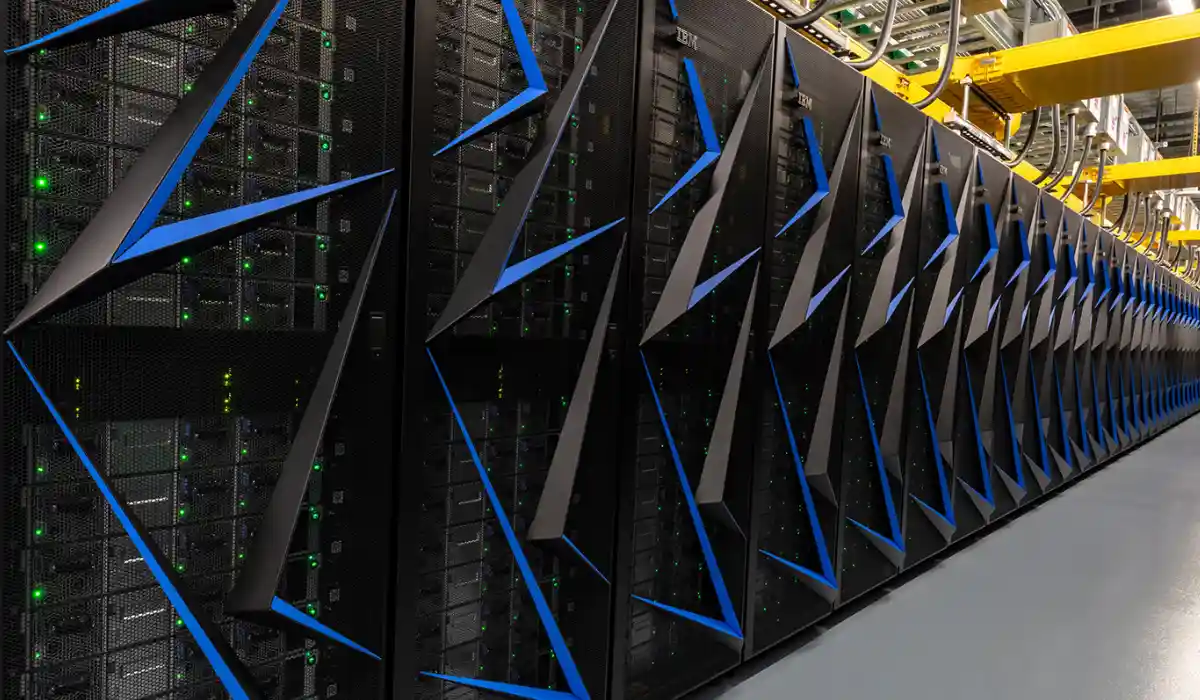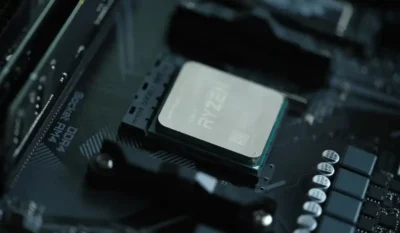Huawei has just launched its new supercomputer the CloudMatrix 384. This system is more than just a powerful machine, it’s a direct response to the global dominance of Nvidia in AI computing.
Table of Contents
CloudMatrix 384
Huawei launched the CloudMatrix 384 at the World Artificial Intelligence Conference (WAIC) in Shanghai. It wasn’t a quiet launch. Huawei set up a massive 800-square-meter display area at the event, and the star of the show was this high-performance computing system.
Engineers, tech executives, and industry analyst attended the demo, calling it China’s answer to Nvidia’s most powerful AI systems.
The buzz was clear: people weren’t just curious; they were excited.
What Is CloudMatrix 384 and Why Does It Matter?
The CloudMatrix 384 super computer isn’t just about raw numbers. It’s a full-stack system powered by 384 Ascend 910C chips, all connected through a unique setup called supernode architecture. That’s where the real magic lies.
Instead of regular copper wiring, the system uses optical interconnects to link everything. This allows incredibly fast data movement across chips, with minimal delay.
That kind of speed is crucial when you’re training large AI models or running massive simulations all at once.
Let us tell you about the performance? It’s wild.
- 300 petaFLOPS of compute power in BF16 format (commonly used in AI training)
- That’s more than 1.6 times what Nvidia’s top-tier GB200 NVL72 delivers
- 3.6x more memory than the Nvidia system
- 2.1x higher bandwidth
These numbers make it clear that CloudMatrix 384 is built to handle the heaviest AI workloads.
Why Is Huawei Doing This?
It’s not just about performance bragging rights. There’s a bigger story here.
Due to US export controls, companies like Nvidia are limited in what they can sell to Chinese firms. This has left a gap in China AI infrastructure.
One that Huawei is now rushing to fill. By building everything in-house, from chips to software, Huawei is giving Chinese cloud providers and research centers a domestic alternative.
This isn’t just smart. It’s necessary.
Big names like Tencent, Baidu, and ByteDance are already using Huawei’s AI chips in their data centers. And now, with CloudMatrix 384, they’ve got a locally made system that can go toe-to-toe with the best from the West.
How Does It Compare to Nvidia?
Let’s put the specifications side by side:
| Feature | CloudMatrix 384 | Nvidia GB200 NVL72 |
|---|---|---|
| Chips | 384 Ascend 910C | 72 Blackwell B200 |
| Peak Compute (BF16) | 300 petaFLOPS | 180 petaFLOPS |
| Memory Capacity | 3.6x higher | Standard |
| Memory Bandwidth | 2.1x higher | Standard |
| Interconnect | All-optical supernode | Copper + Optical |
| Power Efficiency | Higher total consumption | More efficient per chip |
Yes, Nvidia still has an edge in energy efficiency. But Huawei is playing a different game. Instead of pushing fewer, more powerful chips, they’ve gone the brute-force route: more chips, bigger racks, and a lot of clever system design to tie it all together.
Why Supernode Architecture Matters
The heart of the CloudMatrix 384 is this supernode design. In simple terms, it means all the chips can communicate directly and quickly. Think of it like a room where everyone can talk to everyone else at once. Which makes the transmission fast, clear, with no signal loss.
This is rare in high-performance computing. Most systems rely on mixed cabling and have latency bottlenecks. Huawei’s approach breaks that mold by using an all-optical layout, which allows higher speed and lower heat.
That’s why CloudMatrix 384 is getting attention.
A Strategic Move by Huawei
This system is Huawei’s way of saying: we’re not just catching up—we’re setting the pace.
It shows how Chinese tech firms are no longer satisfied just assembling foreign parts. Now, they’re building their own systems from the ground up. That’s a big deal, especially when you’re trying to reduce reliance on imported hardware.
And in the context of US-China tech tensions, this matters more than ever. CloudMatrix 384 is a symbol of national ambition in high-performance computing, AI independence, and data sovereignty.
Still Some Challenges Ahead
Let’s be clear—just because CloudMatrix 384 is fast doesn’t mean it’s perfect. Buyers still care about:
- Software support
- Ease of integration
- Developer tools
- Pricing
- Energy consumption
Nvidia has spent years building a full ecosystem. Huawei is just getting started. But they’re moving fast and putting serious money into development.
So while Nvidia might still lead in some areas, the gap is closing.
Why CloudMatrix 384 Matters
At the end of the day, CloudMatrix 384 isn’t just a computer. It’s a signal that China is ready to lead in AI training, supercomputing, and next-gen data tech.
Yes, it’s big, power-hungry, and expensive. But it works. And it shows what’s possible when a company decides to build not just for performance, but for independence.
Expect to hear a lot more about CloudMatrix 384 in the coming months.





